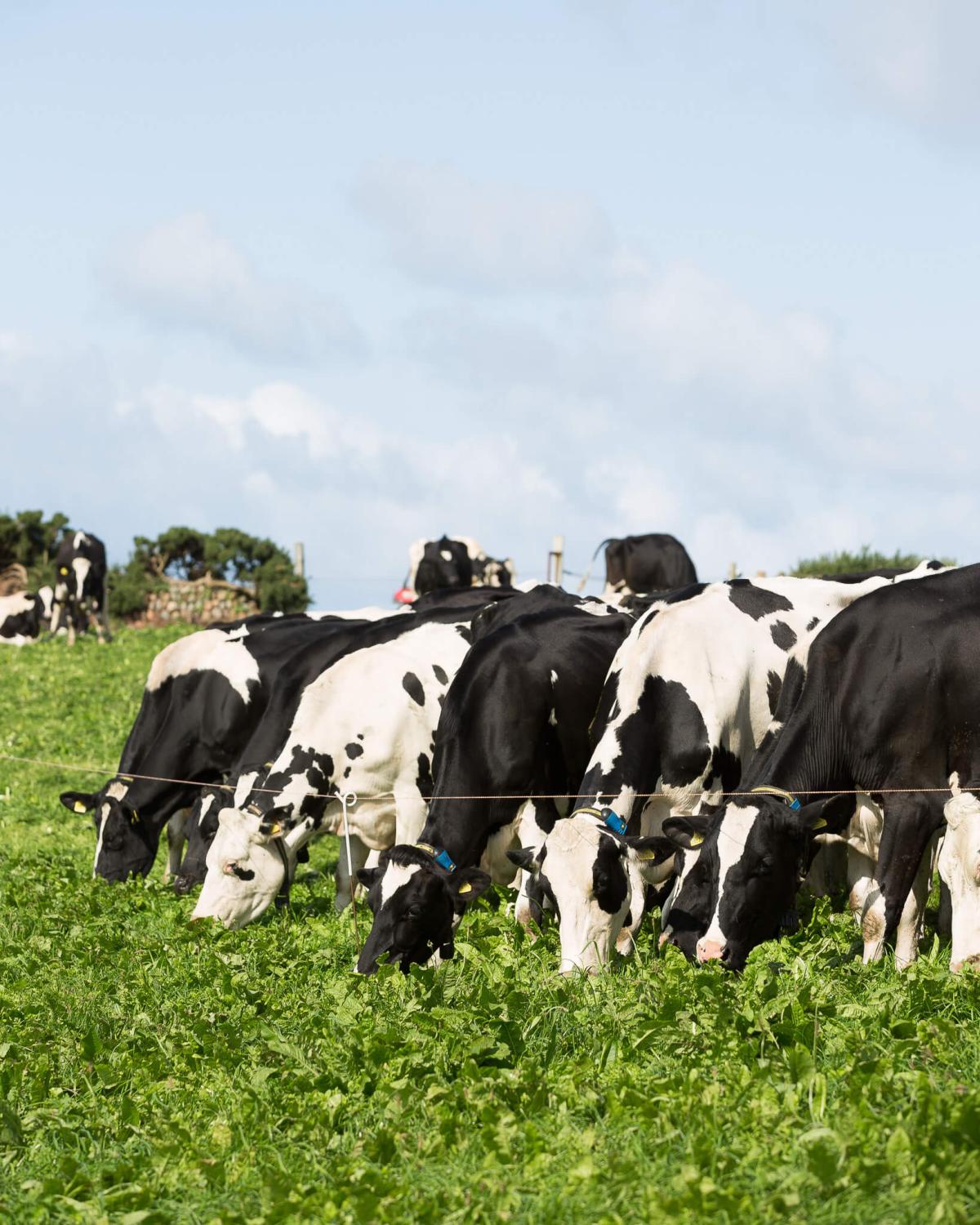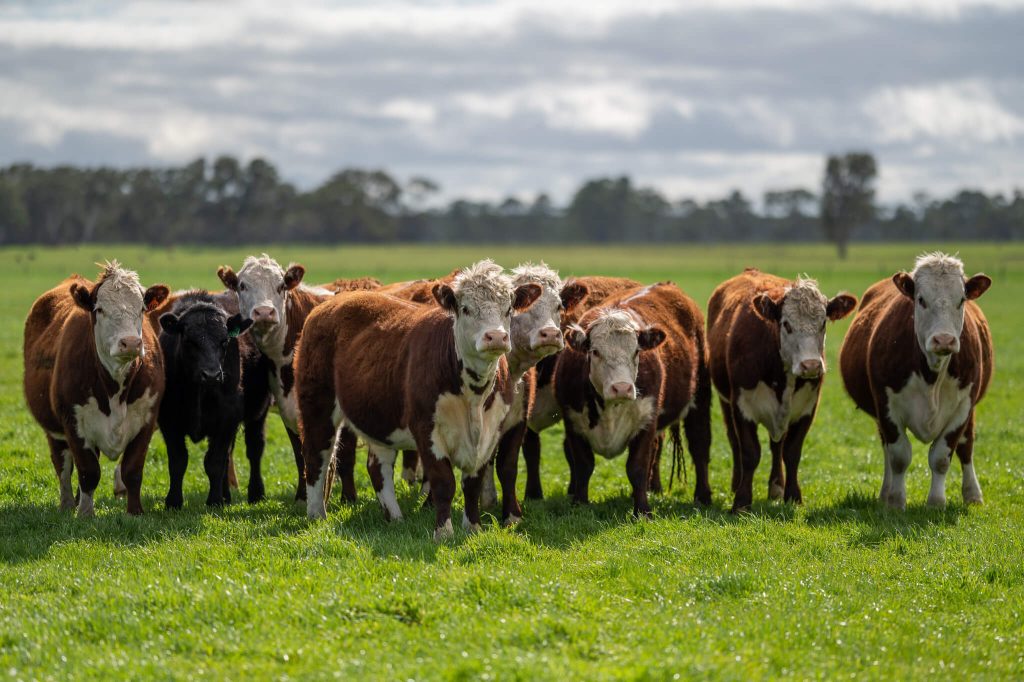
Cow grazing management is fundamental to sustainable livestock production, directly influencing pasture productivity, animal health, and overall farm efficiency. Two of the most effective grazing strategies, known as spring strip grazing and rotational grazing, enable farmers keeping cows to optimise pasture utilisation, reduce waste, and improve livestock performance when implemented correctly.
These methods not only ensure a steady supply of high-quality forage, but also contribute to soil health and long-term environmental sustainability. However, maximising these benefits requires smart fencing solutions that provide efficiency, security, and real-time monitoring. Agrifence’s cutting-edge energisers, such as the Agrifence DPX-500 RF and the Agrifence MBX-1500 Smart Fencing Energiser, support modern grazing systems with advanced, user-friendly fencing solutions.
What is strip grazing and rotational Grazing
Strip grazing involves dividing land into narrow sections, allowing cattle to graze a small area at a time before moving to the next. This controlled approach ensures cattle have access to fresh forage daily or every few days, reducing trampling and waste while encouraging consistent plant regrowth. Rotational grazing, on the other hand, segments pastures into multiple paddocks where livestock graze one section while the others rest and recover. This method helps maintain soil integrity, prevents overgrazing, and promotes biodiversity by allowing plants time to regenerate before being grazed again. Both strategies contribute to healthier, more productive pastures and improved livestock performance.
One of the biggest advantages of these grazing systems is improved forage utilisation. By controlling access to pasture, cattle consume high-quality forage without damaging large areas, ensuring a continuous supply of nutritious feed throughout the season. Healthier land means better weight gain, increased milk production, and lower dependency on supplemental feed, reducing overall production costs. Additionally, rotational grazing lowers the risk of parasite buildup, as cattle are regularly moved to fresh areas, decreasing the need for chemical deworming treatments. When managed properly, these systems create a balanced environment where both livestock and pasture thrive.

The role of Agrifence Smart Fencing in grazing management
Implementing strip and rotational grazing effectively requires reliable and adaptable fencing solutions. Temporary fencing is a crucial component in managing grazing areas, as it allows for flexible land division without the need for permanent infrastructure. Agrifence provides industry-leading energisers that offer security, efficiency, and remote control capabilities, making them ideal for modern grazing systems.
The Agrifence DPX-500 RF Smart Fencing Energiser is one of the most powerful RF energisers available, offering farmers a dual-power option that runs on both mains power and a 12V battery. Designed for smart farming, this energiser provides peace of mind by delivering consistent power to fencing systems while saving time with automated monitoring. Its ability to integrate seamlessly into grazing systems makes it an excellent choice for strip and rotational grazing setups. By ensuring a strong and reliable fence, the Agrifence DPX-500 RF helps maintain controlled grazing patterns, preventing livestock from accessing areas that need recovery time and ensuring optimal pasture use.
For those seeking the most advanced fencing technology, the Agrifence MBX-1500 Smart Fencing Energiser provides unmatched security, reliability, and efficiency. Designed to eliminate unnecessary fence checks, this energiser offers 24/7 remote monitoring and control from a mobile device. Whether on-site or miles away, farmers can instantly manage their fence, reducing the need for physical inspections and ensuring livestock remains contained within designated grazing areas. Instant alerts notify users of power loss, low power, or tampering, allowing for immediate action. This level of control significantly enhances the efficiency of strip and rotational grazing systems by ensuring that pastures remain properly managed without requiring constant manual oversight.
Sustainability and economic benefits of Agrifence Smart Grazing solutions
Sustainability is a key advantage of structured grazing. Well-managed pastures experience less soil compaction, better water retention, and improved carbon sequestration, helping to mitigate environmental impact. By allowing time for nutrient cycling and root development, rotational grazing supports long-term soil fertility, reducing the need for chemical fertilizers. At the same time, strip grazing minimizes waste, making the most of available forage and preventing overgrazing. These techniques, when combined with Agrifence’s advanced energisers, create a sustainable, high-performance grazing system.
The Agrifence MBX-1500 goes beyond standard energisers by offering a theft prevention system with GPS tracking. If the energiser is unplugged, switched off, or moved, instant alerts are sent to the user, ensuring added security. Additionally, its high-performance 20J stored energy and 15J output create a powerful fencing solution that keeps livestock secure at all times. With dual-power operation (230V mains and 12V battery), farmers have the flexibility to use the energiser in different environments without disruption. The power-saving mode ensures energy efficiency, making it a cost-effective and environmentally friendly option.
By integrating smart fencing solutions, farmers reduce the time spent manually checking and repairing fences, allowing them to focus on other aspects of livestock and pasture management. Automatic battery charging ensures continuous operation, even during power outages, eliminating potential disruptions to grazing schedules. With support for up to 10 users, the system allows multiple team members to monitor and manage the fencing, ensuring seamless farm operations.
Implementing a Successful Grazing and Fencing Strategy
To maximise the effectiveness of spring grazing, farmers should introduce cattle to fresh pasture gradually, especially in early spring when lush growth can cause digestive issues. Monitoring pasture height with tools like rising plate meters can help determine optimal grazing periods and prevent overuse. Adjusting stocking density based on forage availability ensures a balanced system, preventing resource depletion. Temporary fencing solutions, such as those supported by the Agrifence DPX-500 RF and Agrifence MBX-1500, provide the flexibility needed for precise pasture management without the expense of permanent fencing.
Integrating rest periods based on forage regrowth rather than fixed schedules allows pastures to recover more effectively, ensuring long-term productivity. Smart fencing systems make this process more efficient by enabling farmers to move livestock at the right time with minimal manual intervention. With real-time monitoring and control, adjustments can be made instantly, optimising pasture utilisation while maintaining livestock security.
Spring strip grazing and rotational grazing are powerful techniques for improving cattle performance and sustaining pasture health. By implementing these strategies with a structured, adaptive approach and incorporating smart fencing solutions like the Agrifence DPX-500 RF and Agrifence MBX-1500 Smart Fencing Energiser, farmers can enhance efficiency, boost livestock well-being, and promote long-term environmental sustainability. The ability to remotely monitor and control fencing systems not only saves time but also ensures that pastures are used to their full potential. Investing in advanced fencing solutions provides peace of mind, enhances productivity, and contributes to a more profitable and sustainable farming operation.
